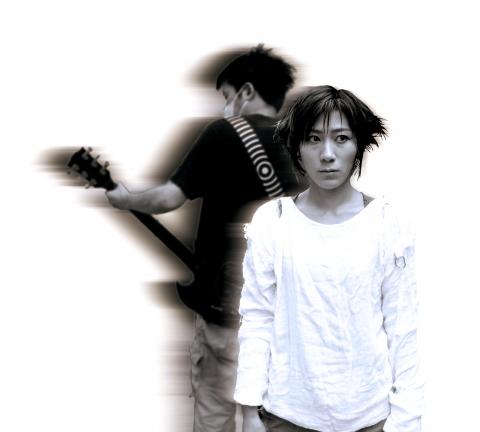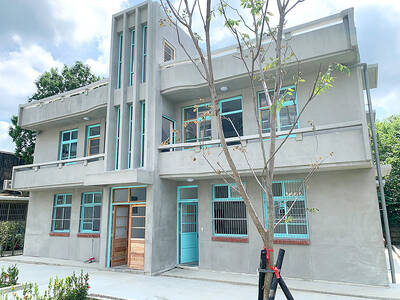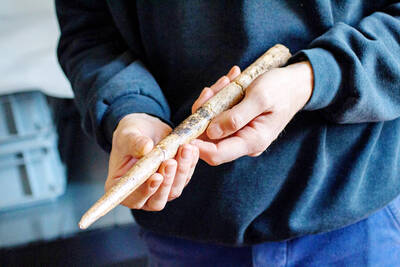Fans and critics alike love to put music into categories that can be easily defined, qualified and understood. But every so often a band comes along that is so spastic and unpredictable that any effort to slap a genre tag on them. would be nothing less than an exercise in futility
There is no band on the face of the planet that exemplifies this better than Tokyo’s Melt-Banana, a band that, merely for the sake of convenience, we’ll say is rooted in the brashness of punk and the visceral discomfort of noise as much as it is in the viciousness of grindcore and the melody of pop.
Melt-Banana’s first album, the Steve Albini-produced Speak, Squeak, Creak came out in 1994. Since then, the band has toured the world with other likeminded groups like Mr. Bungle, Tool and the Melvins, and released eight more full-length studio records. It wasn’t until 2009 that Melt-Banana first made it over to Taipei, playing a raucous set at The Wall to an appreciative audience.

Photo Courtesy of Melt-Banana
This time they’ll play at Underworld (地下社會), a week before the venue closes permanently. Guitarist Ichirou Agata and vocalist Yasuko Onuki, who have recently begun performing as a computer-backed duo rather than as a full band, will transform the cramped confines of Taipei’s answer to CBGB into a sweaty, contorting mass of flailing limbs and open hearts. It was precisely the fact that Underworld is not long for this world that drew the band back, says Onuki.
“It is a pity that Underworld has to be shut down,” she explains, “And that’s the reason that we will go to Taiwan this time. We heard about the story from 1976’s drummer when we went to see them at the Summer Sonic festival in Tokyo, and we told him that we wanted to play at Underworld once before they are shut down.”
■ Melt-Banana plays tomorrow night at 9:30pm at Underworld (地下社會), B1, 45 Shida Road (台北市師大路45號B1), with DJ sets later in the night from He Dong-hong (何東洪), Ichirou Agata from Melt-Banana, Bobo & BB of Bass Kitchen Taipei and Tseng Guo-hung (曾國宏) from Forests (森林合唱團). Admission is NT$500. Tickets for just the DJ sets are NT$250.
Icelandic indie-poppers mum and UK indie rockers British Sea Power have both been to Taiwan before. On Tuesday, they are back as part of a three-band showcase, Hostess Club Night, at Legacy with San Diego surf punk band Wavves. If the gig gives you feelings of deja vu, that is probably because this happening comes from Earwax, which last fall put together a bill of Trail of Dead, Dinosaur Jr. and Thurston Moore.
Mum will be a little different this time around. They are still a big production that mixes traditional and classical instruments — violin, clarinet, a mandolin type instrument, accordion and I am pretty sure I can hear a glockenspiel — with delicate, glitchy electronics. But vocalist Kristin Anna Valtysdottir, whose ethereal and pointedly naive little girl vocal delivery has probably been the most defining element of the band’s sound thus far, has left the band to make music with her husband Avey Tare of Animal Collective. Her spot is filled by her twin sister, Gyoa, so maybe this is one of those jokes that twins like to play on strangers? Whichever one comes, the stage show should still be a spirited affair. In terms of Icelandic pop, Mum is like the lively folk antidote to the serene high art of Sigur Ros. For them, a show means having fun with the audience, which is what happened last time around in Taipei.
I have never been a big fan of British Sea Power, who are not bad but just a rather generic flavor, so let’s skip on to something fresher, saltier and similarly ocean-themed — Wavves. (The two v’s are there, I suspect, so you can find them in an Internet search.) They are a new breed surf punk band by twentysomethings Nathan Williams and Stephen Pope, joined for the moment by drummer Jacob Cooper and extra guitarist Alexander Gates. If you thought surf music was dead, you are probably not alone. But with Florida band Surfer Blood and California’s Best Coast, who are incidentally tight buds with Wavves, a new cohort is forming, and it seems to draw as much from the earnest, hipster vibe of indie rock (think The Stokes) as it does the legacy of classic surf rock or SoCal punk. Wavves sings a lot of straight-ahead three-chord punk, but instead of the vicious, stop-start arrangements and ironic lyrics of ’80s or ’90s punk, they are more boisterous than rebellious, more melodic than jarring. Williams’ lyrics have the honesty of someone puking in the street outside of a nightclub: “I’m so paranoid” (sung over and over) and “I’d say sorry, but it wouldn’t mean shit” are a couple typical examples.
When I asked about what it means to be new-breed surf punk, Bass player Stephen Pope, in an e-mail interview, replied, “I’ve always loved Dick Dale and the Beach Boys, so yes I consider them major influences even though we don’t particularly sound like either. I know Nathan was a huge fan of Agent Orange growing up and still is. We’re both huge fans of classic surf rock and punk and everything, so I guess just growing up listening to all of that rubbed off a little bit on our songwriting.”
The band has two full-length albums so far, and has already found interesting collaborations, including one song that served as the backdrop for rapper Big Boi on his big 2012 album Vicious Lies and Dangerous Rumors. Pope says that while the song’s producer, John Hill, was reworking the demo, “Just by chance I think Big Boi’s producers came by, heard the song, and loved it.”
This is the Wavves second trip to Asia, following a small tour of Japan in 2011, and Pope is pretty jazzed about it. “I can’t wait to be back,” he says.
■ Hostess Club Taipei, with British Sea Power, Mum and Wavves, takes place at 8pm, Tue, June 11 at Legacy, 1, Bade Rd Sec 1, Taipei City (台北市八德路一段一號). Tickets are NT$1,800 or NT$1,600 in advance through www.books.com.tw

June 2 to June 8 Taiwan’s woodcutters believe that if they see even one speck of red in their cooked rice, no matter how small, an accident is going to happen. Peng Chin-tian (彭錦田) swears that this has proven to be true at every stop during his decades-long career in the logging industry. Along with mining, timber harvesting was once considered the most dangerous profession in Taiwan. Not only were mishaps common during all stages of processing, it was difficult to transport the injured to get medical treatment. Many died during the arduous journey. Peng recounts some of his accidents in

“Why does Taiwan identity decline?”a group of researchers lead by University of Nevada political scientist Austin Wang (王宏恩) asked in a recent paper. After all, it is not difficult to explain the rise in Taiwanese identity after the early 1990s. But no model predicted its decline during the 2016-2018 period, they say. After testing various alternative explanations, Wang et al argue that the fall-off in Taiwanese identity during that period is related to voter hedging based on the performance of the Democratic Progressive Party (DPP). Since the DPP is perceived as the guardian of Taiwan identity, when it performs well,

A short walk beneath the dense Amazon canopy, the forest abruptly opens up. Fallen logs are rotting, the trees grow sparser and the temperature rises in places sunlight hits the ground. This is what 24 years of severe drought looks like in the world’s largest rainforest. But this patch of degraded forest, about the size of a soccer field, is a scientific experiment. Launched in 2000 by Brazilian and British scientists, Esecaflor — short for “Forest Drought Study Project” in Portuguese — set out to simulate a future in which the changing climate could deplete the Amazon of rainfall. It is

Artifacts found at archeological sites in France and Spain along the Bay of Biscay shoreline show that humans have been crafting tools from whale bones since more than 20,000 years ago, illustrating anew the resourcefulness of prehistoric people. The tools, primarily hunting implements such as projectile points, were fashioned from the bones of at least five species of large whales, the researchers said. Bones from sperm whales were the most abundant, followed by fin whales, gray whales, right or bowhead whales — two species indistinguishable with the analytical method used in the study — and blue whales. With seafaring capabilities by humans